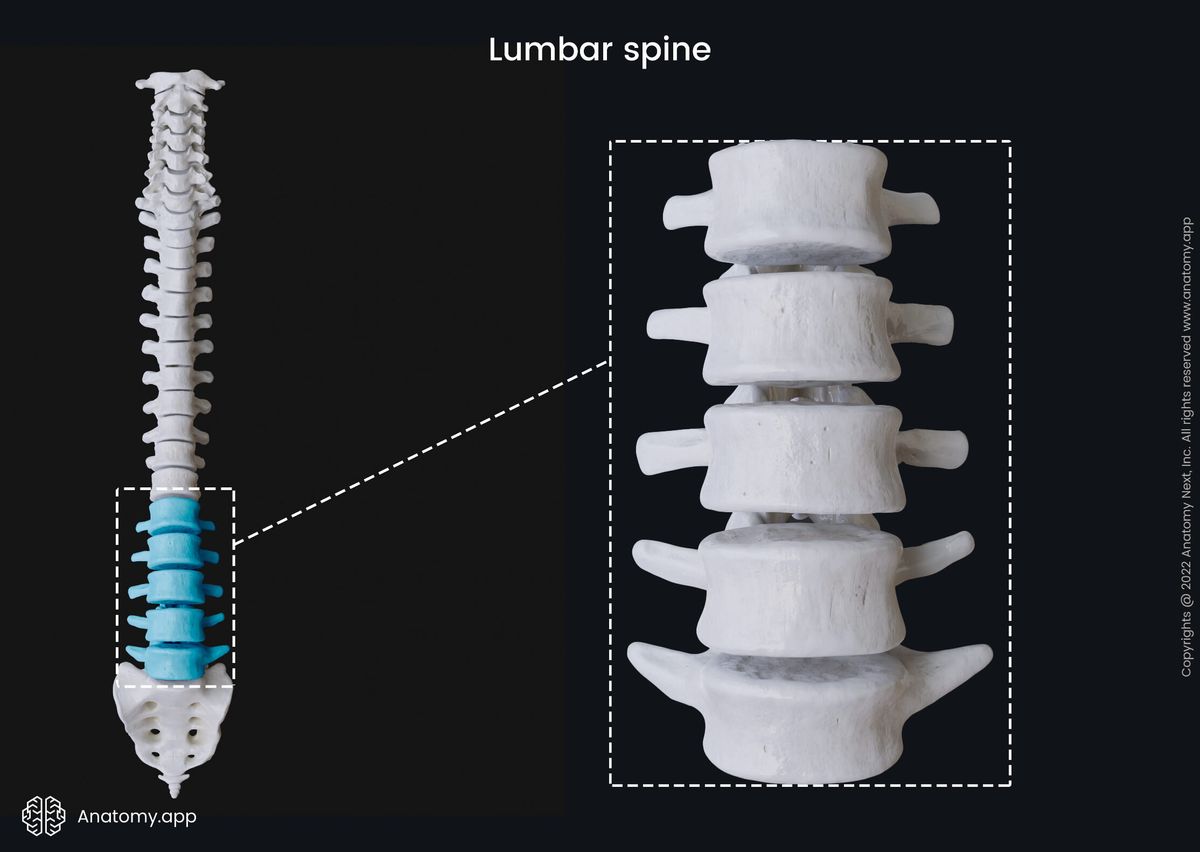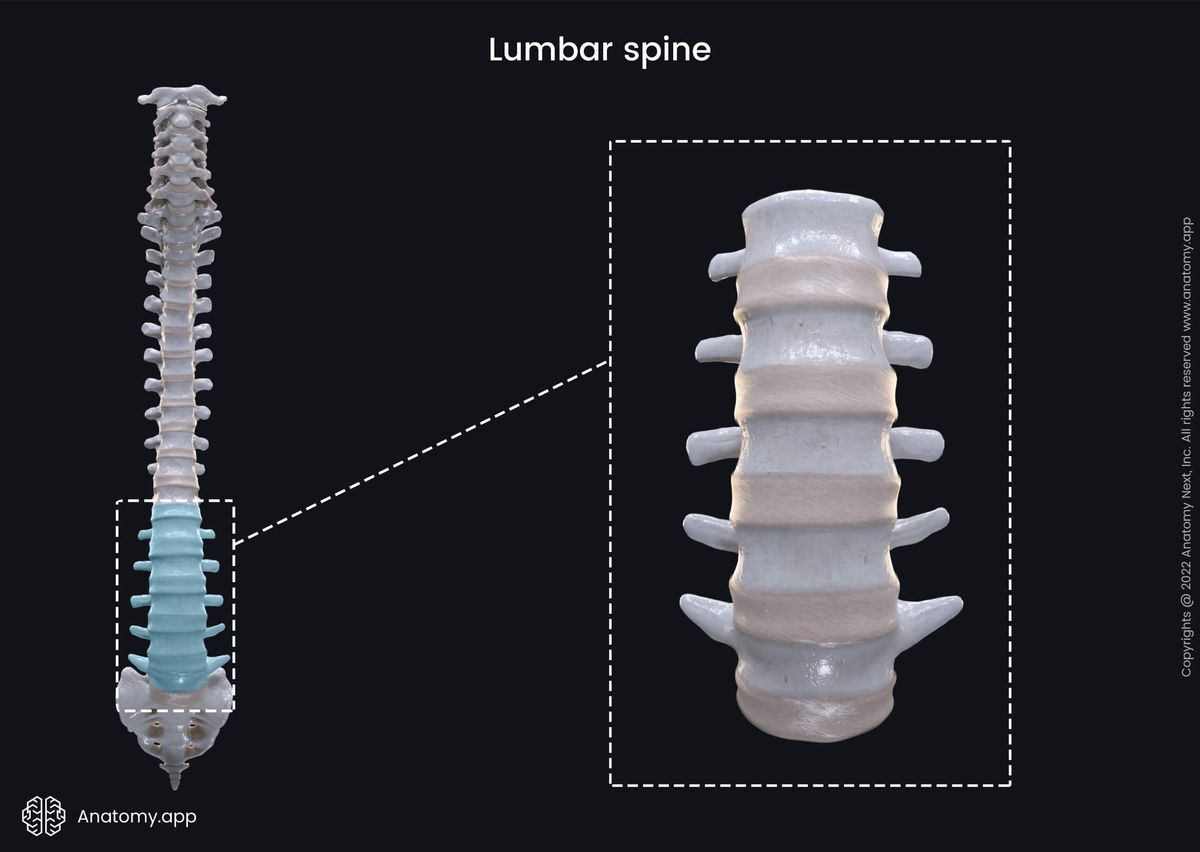- Anatomical terminology
- Skeletal system
- Joints
- Muscles
- Heart
- Blood vessels
- Nervous system
- Respiratory system
- Digestive system
- Lymphatic system
- Female reproductive system
- Male reproductive system
- Endocrine glands
- Eye
- Ear
Lumbar vertebrae
The lumbar vertebrae (Latin: vertebrae lumbales) are five vertebrae (L1 - L5) in the lumbar part of the spine located downward from the thoracic vertebrae. They give skeletal support to the posterior abdominal wall. The lumbar vertebrae are characterized by their significant transverse processes and large size compared to other vertebrae.


Landmarks of lumbar vertebrae
Like other vertebrae, each lumbar vertebrae present similar anatomical landmarks, and they include the following:
- Vertebral body
- Vertebral arch
- Pedicle (2)
- Lamina (2)
- Vertebral foramen
- Spinous process
- Superior and inferior articular processes (2)
- Transverse process (2)
- Accessory process (2)
- Mammillary process (2)
The vertebral body of a typical lumbar vertebra is large and appears cylindrical-shaped. Usually, it is wider in the transverse than the anteroposterior direction. The vertebral arch is formed by a pair of pedicles and laminae, and it encloses the vertebral foramen and supports vertebral processes.
The pedicles are directed backward from the upper part of the vertebral body. They significantly increase in width and angulation in the axial plane from the upper to lower lumbar vertebrae. The laminae are typically broad and short, forming the posterior aspect of the vertebral arch and connecting the spinal process with the pedicles.

The vertebral foramen of the lumbar vertebrae appears triangular-shaped when viewed from above, and this foramen is larger in lumbar than in thoracic vertebrae but smaller than in cervical vertebrae. The vertebral foramina create the spinal canal that surrounds and protects the spinal cord.
The spinous process is thick and broad. It appears quadrilateral-shaped, projecting backward and ending with a thick, uneven border. The superior and inferior articular processes are usually well-defined. They project upward and downward from the vertebral body and arise from the junctions of the pedicles and laminae.

The transverse processes are usually thin and long, except for the fifth lumbar vertebra that has a massive and cone-shaped process for attachment of the iliolumbar ligament. These ligaments connect the transverse processes to the pelvis. The transverse processes are also called the costal or costiform processes, as their fusion with rib rudiments forms them.
The transverse process presents a bony prominence called the accessory process on its posterior surface. The posterior aspect of the superior articular process contains one another bony prominence called the mammillary process. Both processes serve as attachment sites for the deep back muscles.